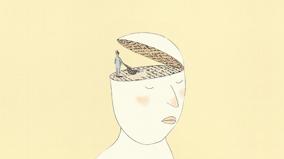La boîte
Court métrage de Co Hoedeman utilisant les techniques de l'animation de marionnettes, du tournage réel et de la pixillation. Un artiste met la dernière main à la fabrication d'un personnage dans son atelier. Une fois terminé, celui-ci prend vie et part à la découverte de son environnement. Reflet du développement et de l'apprentissage de l'enfant, cette fable fantaisiste nous entraîne dans un univers magique où priment invention et imagination. Film sans paroles.

Details
Court métrage de Co Hoedeman utilisant les techniques de l'animation de marionnettes, du tournage réel et de la pixillation. Un artiste met la dernière main à la fabrication d'un personnage dans son atelier. Une fois terminé, celui-ci prend vie et part à la découverte de son environnement. Reflet du développement et de l'apprentissage de l'enfant, cette fable fantaisiste nous entraîne dans un univers magique où priment invention et imagination. Film sans paroles.
-
directorCo Hoedeman
-
producerYves Leduc
-
executive producerRobert Forget
-
imagesFrançois Beauchemin
-
soundLouis HoneNormand Roger
-
editingSuzanne Allard
-
sound editingNormand Roger
-
musicNormand Roger
-
sound mixerAdrian Croll

















